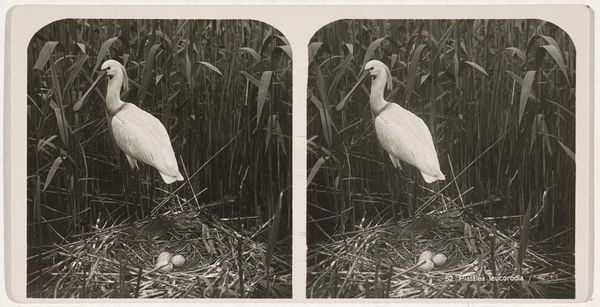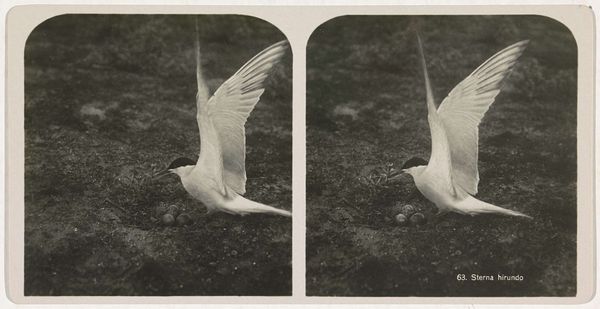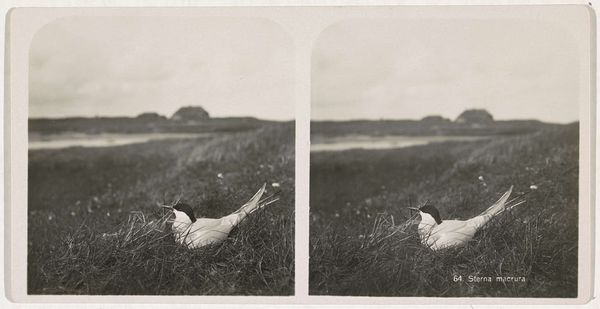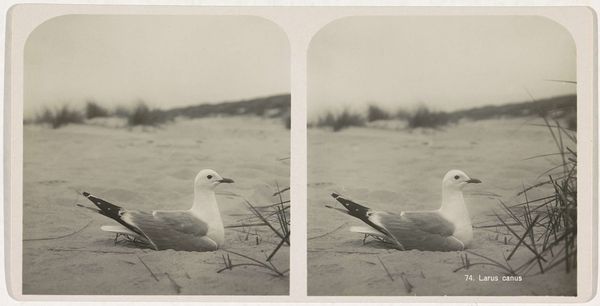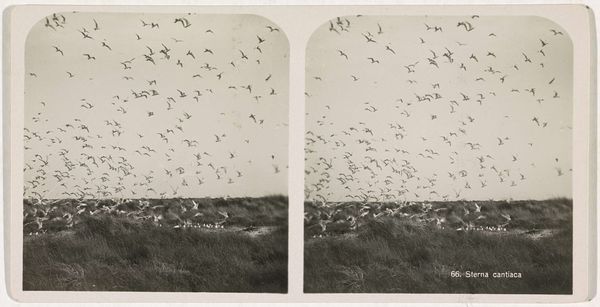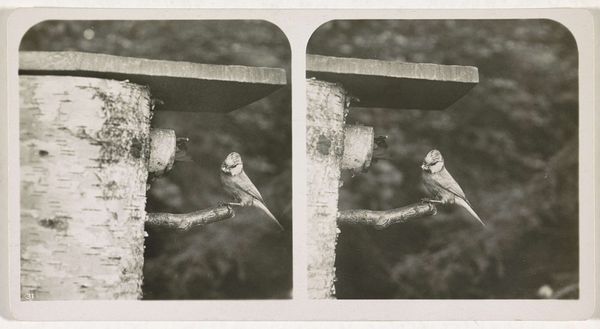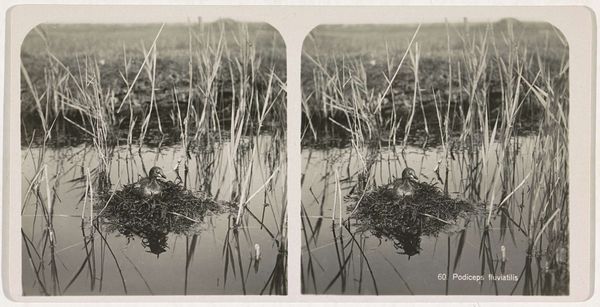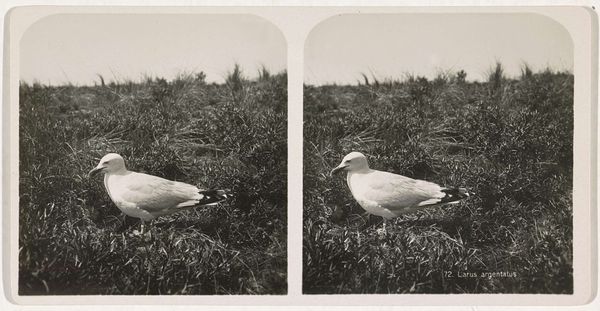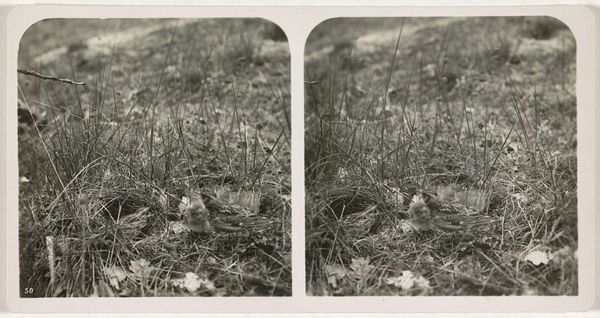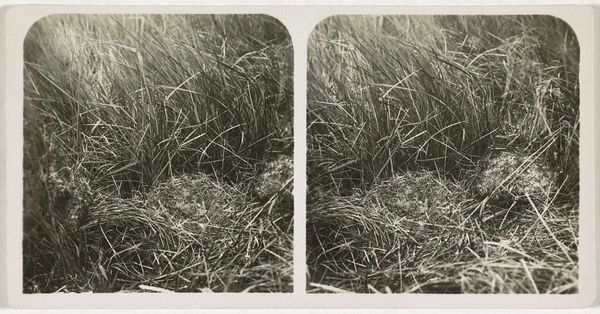
Dimensions: height 85 mm, width 165 mm
Copyright: Rijks Museum: Open Domain
Curator: This is Adolphe Burdet's "Lepelaar met gespreide vleugels," a gelatin silver print from sometime between 1870 and 1940, housed here at the Rijksmuseum. It’s quite a remarkable piece. Editor: My immediate sense is one of stark grace. The bird, wings outstretched, hovers almost ethereally amidst what looks like a dense, almost overwhelming thicket. There’s a feeling of intrusion, as if we’re witnessing a private, almost sacred moment. Curator: That’s a sensitive reading. Burdet’s work often engaged with the changing landscape of the Netherlands, particularly the encroachment of human activity on natural habitats. These images had considerable influence on emergent environmental awareness during this period. Editor: So, it's a bit of an activist photograph then? That bird looks pretty exposed, maybe vulnerable. It also reads as more timeless because of the muted tone, and a somewhat loose style; and the soft gray palette evokes a melancholic sense of a fading era. Curator: Yes, although it’s often contextualized as a product of its time. Early gelatin silver prints offered a unique capacity to document these environmental changes. Before Burdet and others, wildlife photography didn’t always have a preservationist agenda. This is what I would describe as art with political agency. Editor: I suppose you are right to interpret the piece within those lines. Even the composition adds to this feeling. All those reeds creating such claustrophobia make the subject all the more poignant. But, from where I'm standing, it's a poem for impermanence more than a document for action. Curator: Ultimately, Burdet's photograph reflects the cultural shift where the natural world went from existing outside human systems into being threatened by them. The Lepelaar becomes not only an animal but a metaphor. Editor: Indeed! It's a gorgeous reminder that fragility is inherent, and perhaps something we're meant to safeguard. So let's hope it flies out of our lens into reality now, yeah? Curator: Exactly. There is a visual argument there that we need this animal flourishing. That the alternative would be such a great pity.
Comments
No comments
Be the first to comment and join the conversation on the ultimate creative platform.
